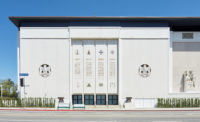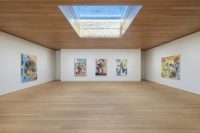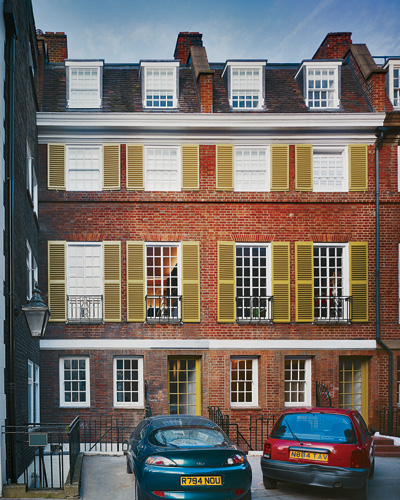Delfina Foundation
Artists Colony: A foundation offers food, shelter, and work space in two conjoined townhouses, fostering a kind of think tank for artists.














London
Delfina Entrecanales is an unusual cultural philanthropist, her Delfina Foundation in London is an unusual place, and the architectural concept underlying it was born of an unusual international collaboration. The result of all this unorthodoxy is a small renovation and adaptive-reuse project that manages to be an intense and inventive environment for the changing roster of artist-residents there.
Periodically Entrecanales reinvents her enterprise, most recently in concert with her young director Aaron Cezar. In its latest iteration in Victoria—the heart of London—the Foundation operates an international program, with a special interest in artists from Africa and the Middle East. At first it occupied a tiny 1920s house in one of those typical London tucked-away, secret corners that even most Londoners don't know about (I didn't). Now it has doubled in size with the purchase of an identical house next door. From the outside, apart from its greenish-yellow shutters, this pair of faintly Italianate brick houses is indistinguishable from its neighbors. Inside, however, it is one building, interconnected in usual and unusual ways, with structural-glass floor panels allowing diagonal views through the building. The combined houses function as a home for artists, the Foundation's offices, and a public gallery.
True to its ideals, the Foundation launched an architectural competition with the brief that British architects must work with colleagues from the Middle East or North Africa. Ten-year-old London practice Studio Octopi (directed by Chris Romer-Lee and James Lowe) teamed with Giza-based architect Shahira Fahmy, who happened to be in London at the time of the competition. They decided the building should remain domestic in feel. “We explored the idea of the domestic hearth in Middle Eastern society and in Western society, together with the idea of layering,” says Romer-Lee.
The place is buzzing. So far in 2014, 37 artists of highly diverse nationalities have passed through the building, with another four starting this summer. The house is not used for messy studio work; if that's required, artists rent a space elsewhere. The idea is to provide a residential research facility for the kind of deep thinking that may or may not immediately result in the making of art, although some of the bigger bedrooms have workspace. The gallery show on view in late June included a variety of video and installation pieces by a recent batch of residents, but it's clear that this place is dedicated to stimulating artists rather than the public.
Arranged on four floors, plus a basement level for studios and gallery space, the Foundation has eight rooms for the artists, who are typically there for three to four months at a time. The big architectural move was to separate the circulation of the artist-residents from that of the public (who are allowed on the ground and basement levels) and administration (who occupy the second floor). Having two front doors—one private and one public—aids the separation. The artists' shared kitchen is deliberately at ground level, however, as far from their bedrooms as possible, to ensure mingling. Visual links are made between the two worlds, with daylight filtering down through the building via the strategically placed glass panels in the floors at the ground, second, and third levels. Through the thick glass, you get glimpses into other parts of the complex, the idea being to maintain connections and avoid over-possessiveness about space.
The interior finishes are of the “scrape and reveal” aesthetic, a cherishing and highlighting of a building's evolution. For example, there are two patches of lovingly retained old floral wallpaper, and sections of exposed brick showing traces of removed pipes. It's all a way to play with these bourgeois buildings and genteel surroundings, as is the subdivision of spaces with folding and sliding doors. According to Cezar, the concept works. “We think of the whole house as a studio. It creates different conversations.”
People
Architects:
Engineer:
Consultants:
General Contractor:
Client:
Size:
Construction Cost:
Completion Date: |
ProductsGlass floors: Specialist Glass Laminates Lighting: Erco Resin Flooring: Senso Block Pavers: Wienerberger |









